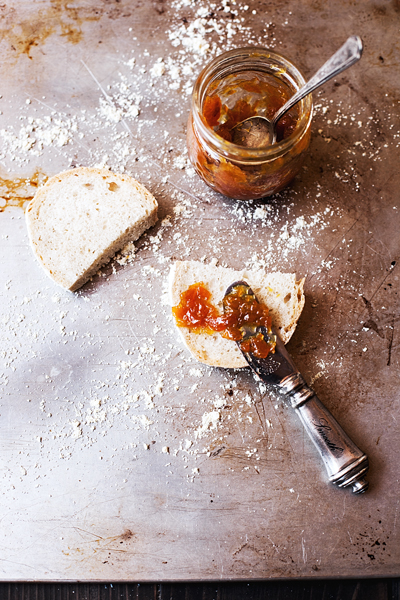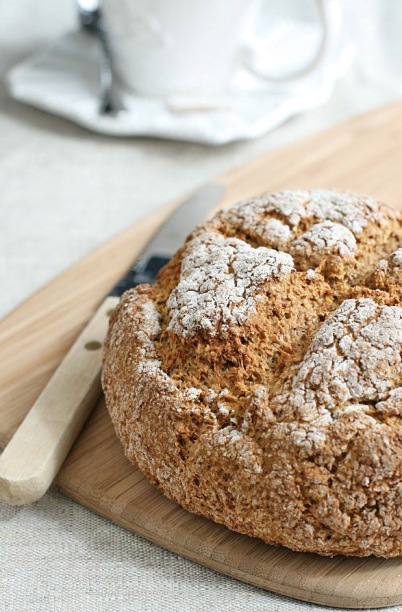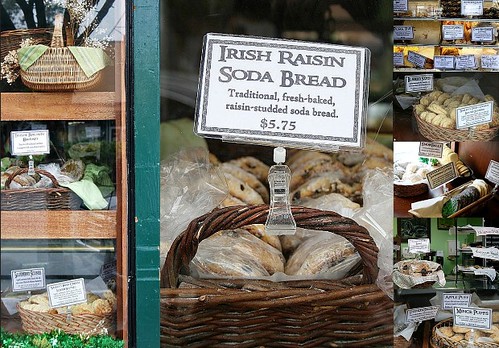
Negli angoli di casa cerchi il mondo
nei libri e nei poeti cerchi te...
In the corners of the house you're looking for the world
in the books and the poets you're looking for yourself...
~ Francesco Guccini, Another Day Went By
Take a summer afternoon. Fresh and quirky as the afternoons hooded with fog on the North Pacific, or those pissed off with rain in August up in the mountains. Take a dough of ancient times, lazy but exciting as a poker match on a wrinkled, flowered tablecloth. Add the tenderness of a freshly baked loaf, and that scent so similar to the loaf that they used to give you at the corner, in those fantastic sunny mornings when you had the time to slide in front of the counter for 100 Liras worth of Coke-shaped candies.
Fresh bread, jam and a violent layer of butter were the perfect world, when you really believed in God, and you imagined Him smiling and walking around the clouds, although maybe He got a bit sad if He happened to look down here. You were able to inhabit the stars and the planets with your imagination, arguing with your classmates over the ownership of Alpha, Beta, and the Pole Star, as well as a share of Saturn and the absolute dominion over Jupiter. And everything would last forever, the house on a tree, the daisies, the board games, bread&nutella and the afternoon tea. Because it was easy to take each other by hand and slip into the night, without thinking what it will be, where it will be, tomorrow.
Short note: I'm pleased to announce that this recipe is part of the August 2013 issue of Threef, a photography & food magazine; it's a special issue dedicated to Time, the time that passes, that stops or that you dream of, and also the time that never comes back.
If you weren't judge me biased, I'd recommend you browse it, because it's really worth it. But I won't say anything, because I'm not biased.

for 1 loaf
Starter
fine ground flour 300 gr
water 180 gr
fresh brewer's yeast 5 gr
fine ground flour 300 gr
water 180 gr
fresh brewer's yeast 5 gr
Mix all the ingredients in a bowl until the dough is well blended, but working as little as possible. Cover and let rise at room temperature for 20-24 hours.
Second Rise 105 gr
fine ground flour 100 gr
water 50 gr
fresh brewer's yeast 2 gr
fine ground flour 100 gr
water 50 gr
fresh brewer's yeast 2 gr
Dissolve the starter and the yeast with the water and knead briefly with the flour, then cover again and let rise for another 20-24 hours.
Dough
fine ground flour 250 gr
water 150 gr ca
fresh brewer's yeast 2 gr
fine ground flour 250 gr
water 150 gr ca
fresh brewer's yeast 2 gr

Place the flour on the work surface, make a well in the middle, then crumble in the center the fresh yeast and the starter. Dissolve with water and when you get a well-blended mixture, add the flour and knead by hand, working as little as possible. Shape the dough into a loaf, push it down and lay it vertically in front of you. Lift one edge and fold it toward the center, place your thumbs on the folded part and press until you reach the surface of the table below. Keep folding in the same direction until you completely roll the dough. Place it on a kitchen towel, well dusted with flour, with the fold underneath, dust with more flour, wrap it with the cloth, squeezing a little and sealing it as if it were a package, and let it rise for at least half hour. When ready, there will be cracks all over the surface. Sprinkle some flour on the back of a tray, grab the towel and position the bread on your forearm, then transfer it on the tray placing the fold underneath without any abrupt movement. Slide it on a baking stone or a baking sheet already hot, bake it in a preheated oven at 430 for 10 minutes, then lower to 350-375 approximately for 40 minutes.
*I took the recipe from the infallible bible of the Simili Sisters, Pane e Roba Dolce (Bread and Sweet Things). A must-have for all food fanatics and food bloggers out there, bakers and not, since the dawn of time.












